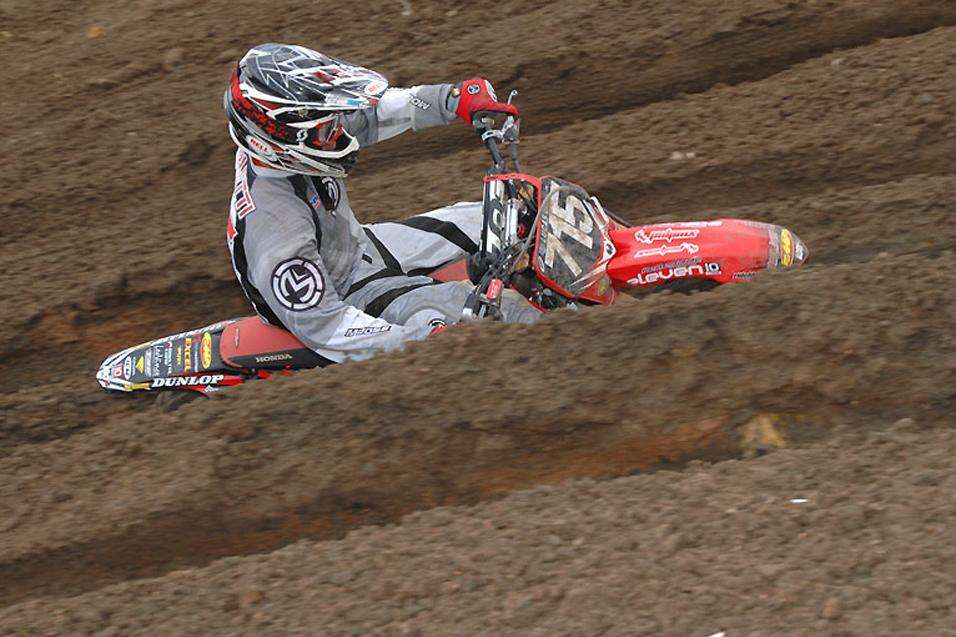The Colorado round of the Nationals this year was gnarly. The track's soil was soft on top with a hard base underneath. This is a recipe for some long, deep, ruts with a lot of bumps. As always it was fast with a lot of elevation changes. Put 40 of the best riders together and it's tough.
With all the media coverage you're already getting on all the race action, I'd like to take this opportunity from Racer X and explain some techniques for these types of conditions. What techniques are the riders using that allows them to race so fast in these difficult conditions?

Carl Stone photos
For starters they are doing a lot of riding the footpegs on the balls of their feet. If they were on the arches of their feet, they would be much more likely to get their feet ripped off the pegs. There are three benefits of riding on the balls of the feet.
1. Your ankle movement adds more body travel (about 4 to 6 inches).
2. You won't hit the shifter or brake by accident.
3. You won't get your feet ripped off the pegs from the dirt catching your toe.
So how do you know when you should be on the balls of your feet? When you're not using the shifter or brake.
Another thing they're doing is looking far ahead in the ruts, not so close in front of the fender. This helps keep their balance and stay in the rut.
When entering a berm (rut corner) they are leaning their head and shoulders a little to the inside just before they enter the berm. This enables them to lean over far enough in the berm. You don't want to push the bike over as you enter the berm. You want to lean your body to the inside first and pull the bike over, down into the berm.
When they put their inside foot out for the corner they are keeping that inside knee against the shroud and lifting their foot up high, just under the handlebars. This allows them to lean the bike over as far as needed without their inside leg getting in the way.

Riding these types of deep berms takes a lot of body movement in order to maintain the center of balance. It also takes good braking control on the way into the berms. Then at the "Transition" (where you go from braking to accelerating) it takes precision timing and control of the clutch and throttle. To go fast into, through and out of these berms it takes a lot of commitment to lean the bike way over. The farther you can control the lean the faster you can go. But of course you have to control what you commit to. To go fast these riders are leaning the bike over so far that the only reason they don't fall to the inside is because they get on the power pretty hard. This is where there's a fine line to riding berms. If you don't lean over far enough the bike will climb out of the berm. If you lean over too far the bike will fall to the inside. Sure, if you don't lean over far enough the brakes will keep you from coming out of the berm, but of course the brakes will also slow you down. For those of you that race you know how difficult this is to pull off consistently.
If you want to learn more about how you can become a better rider check out my website for Free Riding Tips, Free Motocross Technique DVD previews, Streams and Motocross Schools; www.gsmxs.com



